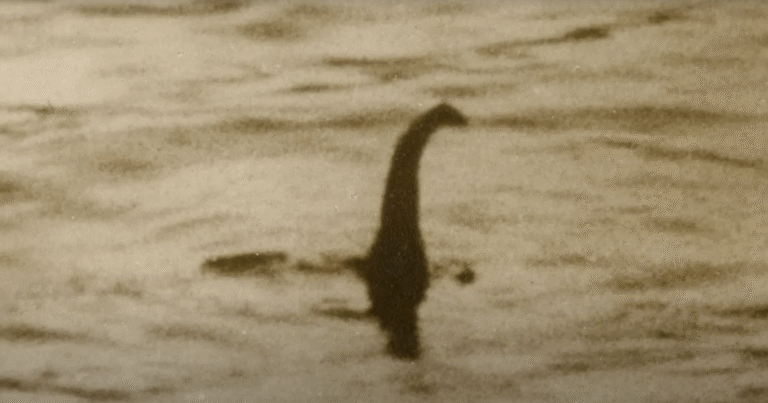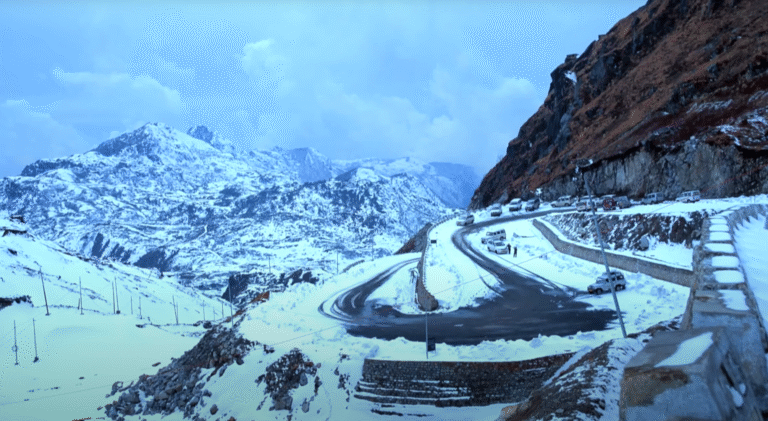Mulkarkha Lake Travel Guide | Trek to the Sacred Wishing Lake
Mulkarkha Lake, perched at an altitude of approximately 7,500 feet on the border of Sikkim and West Bengal, is one of the most enchanting hidden gems in the Eastern Himalayas. Often overlooked by mainstream tourists, this lake offers an unspoiled natural experience combined with cultural and spiritual significance. Surrounded by snow-capped peaks, dense forests, cascading waterfalls, and traditional villages, Mulkarkha Lake is perfect for trekkers, nature enthusiasts, photographers, and spiritual seekers alike.
Quick Facts About Mulkarkha Lake
| Feature | Details |
|---|---|
| Location | Near Aritar, Sikkim / Kalimpong District, West Bengal |
| Altitude | ~7,500 feet |
| Distance from Siliguri | ~145 km |
| Lake Type | High-altitude freshwater lake |
| Activities | Trekking, photography, spiritual visits, birdwatching, nature walks |
| Best Time to Visit | March–May and September–November |
A Glimpse into the History of Mulkarkha Lake
Mulkarkha Lake is not only a natural wonder but also a cultural landmark. Locals consider the lake sacred, often referring to it as the “Wishing Lake”, where wishes made with pure intent are believed to come true. Ancient Buddhist prayer flags and a small shrine near the lake add a spiritual dimension, making it a site of pilgrimage and reverence.
Historically, the lake and surrounding villages have been home to ethnic communities such as the Lepchas, Bhutias, and Sherpas, who have preserved traditional ways of life, from farming to handicrafts, for generations. Travelers visiting Mulkarkha Lake can witness this rich cultural heritage firsthand as they trek through remote villages along the route.
Natural Beauty and Scenic Wonders
Reflection of Kanchenjunga
One of the most captivating aspects of Mulkarkha Lake is its mirror-like reflection of Mount Kanchenjunga, the world’s third-highest peak. On clear days, the lake’s calm waters perfectly reflect the snow-capped summit, creating an ethereal scene perfect for photography or quiet contemplation.
Flora and Fauna
The lake is surrounded by dense Himalayan forests, including pine, rhododendron, oak, and bamboo groves. Spring and early summer bring vibrant rhododendron blooms, adding splashes of red, pink, and white along the trails. Autumn transforms the landscape into a golden and fiery canvas, ideal for photographers and nature lovers.
Wildlife in the area includes Himalayan birds such as monal pheasants, kingfishers, and woodpeckers, as well as mammals like muntjacs, Himalayan squirrels, and occasionally leopards in deeper forests. The lake itself is home to freshwater fish species, making it a haven for anglers during permitted seasons.
Waterfalls and Streams
On the way to Mulkarkha Lake, trekkers encounter several crystal-clear waterfalls and streams, which not only enhance the natural beauty but also provide perfect rest spots to rejuvenate during the hike. These cascading waters are especially majestic during the post-monsoon season.
Trekking to Mulkarkha Lake
The trek to Mulkarkha Lake is moderately challenging but immensely rewarding. The trail passes through:
- Quaint villages: Pass through remote settlements like Jhusing, Tagathan, and Mulkharka, where you can interact with local families and learn about their traditional lifestyle.
- Dense Himalayan forests: Walk through moss-covered trees, ferns, and bamboo thickets, surrounded by birdsong and the fresh scent of pine.
- Cultural sites: Spot small monasteries, shrines, and prayer flags that highlight the region’s spiritual significance.
- Natural landmarks: Encounter waterfalls, streams, and panoramic viewpoints offering breathtaking vistas of the Kanchenjunga range.
Trek Duration: Typically 3–4 days round trip, depending on pace and starting point.
Difficulty Level: Moderate. Suitable for beginners with basic trekking experience, though proper preparation is necessary.
Accommodation Options
While there are no hotels directly at Mulkarkha Lake, visitors can stay in nearby villages or towns:
- Homestays in Aritar and Mulkharka: Enjoy local hospitality, traditional meals, and a glimpse into village life.
- Basic guesthouses in Aritar: Provide comfortable sleeping arrangements and simple amenities.
- Camping: For adventure seekers, camping near the lake is possible with prior permission and guided support.
Best Time to Visit Mulkarkha Lake
The optimal periods to visit are:
- Pre-monsoon (March–May): Clear skies, mild temperatures, and blooming rhododendrons.
- Post-monsoon (September–November): Lush greenery, flowing waterfalls, and excellent visibility of Kanchenjunga.
Avoid monsoon season (June–August) due to heavy rainfall, slippery trails, and leech activity. Winter (December–February) is cold, with occasional snow, which can make the trek difficult without proper gear.
Cultural Significance
Mulkarkha Lake is more than just a scenic spot; it holds spiritual importance for local communities. Pilgrims visit the lake to offer prayers and seek blessings. Prayer flags fluttering in the wind add a vibrant cultural touch, and small shrines along the trail remind visitors of the Himalayan region’s deep-rooted Buddhist traditions.
Nearby Attractions
While in the area, consider visiting these highlights:
- Aritar Lake (Lampokhari): A man-made lake known for boating and tranquil surroundings.
- Mankhim Hilltop: Offers panoramic views of the hills and Kanchenjunga range.
- Lava Jamgon Kongtrul Monastery: A peaceful monastery rich in Buddhist heritage and art.
- Singalila National Park: If you’re extending your trip, this park offers Himalayan wildlife and trekking opportunities.
Suggested Itinerary
3-Day Trek and Exploration Plan
Day 1:
- Morning: Arrival at Aritar or Siliguri.
- Afternoon: Short hikes in the area to acclimatize.
- Evening: Dinner and local homestay stay.
Day 2:
- Morning: Begin trek through forests and villages.
- Afternoon: Stop at waterfalls, scenic viewpoints, and local villages.
- Evening: Camp or stay in a homestay near Mulkarkha Lake.
Day 3:
- Early Morning: Witness sunrise reflections of Kanchenjunga on the lake.
- Late Morning: Explore the sacred spots and prayer flags around the lake.
- Afternoon: Begin trek back to starting point.
- Evening: Return to Aritar for rest or onward travel.
Travel Tips
- Permits: Required for trekking near the Sikkim-West Bengal border. Obtain from local authorities.
- Guides: Hiring a local guide is highly recommended for navigation and cultural insight.
- Packing Essentials: Trekking shoes, warm clothing, rain gear, insect repellent, first aid kit, and water purification tablets.
- Respect Local Culture: Follow customs at sacred sites, avoid littering, and interact respectfully with local communities.
- Photography: Sunrise and sunset offer the best light for stunning photographs of the lake and Kanchenjunga reflections.
Why Mulkarkha Lake Should Be on Your Travel List
Mulkarkha Lake is a perfect blend of adventure, spirituality, and natural beauty. Its serene waters, dense forests, and Himalayan backdrop create a photographer’s paradise, while its cultural and spiritual significance provides a sense of peace and connection.
This lake is ideal for:
- Nature enthusiasts seeking pristine landscapes
- Trekkers looking for moderate yet rewarding trails
- Spiritual seekers exploring sacred sites
- Photographers capturing Himalayan reflections and local life
Instagram captions
- “Sunrise over Mulkarkha Lake—nature’s mirror at its finest.”
- “Wandering through the clouds and reflections of Kanchenjunga.”
- “Where tranquility meets the Himalayan peaks.”
- “Every step of the trek brings a new perspective of beauty.”
- “Sacred waters, serene vibes, and endless horizons.”
- “Mulkarkha Lake: a hidden jewel in the lap of the Himalayas.”
- “Prayers in the wind, mountains in the reflection.”
- “Nature, culture, and adventure—all in one serene lake.”
- “Finding peace in the quiet corners of the Himalayas.”
- “Trekking trails, cascading waterfalls, and endless greenery.”
- “Mirror-like waters reflecting mountains and dreams.”
- “Every sunrise here feels like a new beginning.”
- “Exploring hidden Himalayan paths, one step at a time.”
- “A sacred escape where nature whispers serenity.”
- “From village trails to the calm lake—adventure at every turn.”

